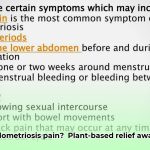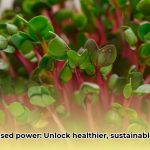Want gorgeous skin and a clear conscience? The world of organic cosmetics is booming, but it can be a bit of a jungle. Lots of companies claim to be “natural,” but how do you know what’s really the deal? This guide cuts through the confusion, showing you how to spot the good guys (and the not-so-good guys) in the organic beauty game. We’ll give you the inside scoop on what to look for, where to find the best products, and how to make smart choices that are good for you and the planet. Get ready to glow—naturally!
The All Naturals Guide to Organic Cosmetics: A Buyer’s Guide to Clean Beauty
The world of natural cosmetics is exploding! More and more people are choosing products they believe are kinder to their skin and the environment. But with so many choices and claims, it can feel overwhelming to find truly natural cosmetics. This guide helps you navigate this exciting, yet sometimes confusing, landscape. We’ll provide practical tips and in-depth knowledge to empower you to make informed decisions.
Understanding the All-Natural Jumble: What’s Really Inside?
The term “all-natural” in cosmetics isn’t as straightforward as you might think. Unlike organic produce, which has pretty clear regulations, the beauty industry lacks a single, universally accepted standard for “natural” or “organic.” Think of it like this: one company’s “natural” might be another’s “mostly natural.” This makes choosing products a little more challenging but also offers a chance to become a more informed consumer. According to a 2024 report by the Environmental Working Group (EWG), the lack of universal standards for “natural” cosmetics means that definitions can vary significantly between brands, resulting in potential confusion for consumers. This ambiguity highlights the need for consumers to be proactive in researching ingredients and certifications.
Navigating Certifications: A Helpful (But Not Perfect) Guide to Authenticity
Certifications can be helpful signposts in natural beauty products, but they aren’t foolproof. Several organizations offer certifications for natural and organic cosmetics, but their standards can vary. Some are stricter than others. A product with a certification likely follows particular guidelines for ingredient sourcing and processing, but it doesn’t guarantee complete purity or that every ingredient is sourced ethically. Consider certifications as a starting point for your research, not the absolute final verdict on a product’s naturalness. Look for certifications like COSMOS, Ecocert, and the USDA Organic seal. Research each certification’s specific criteria to understand what it truly represents. Be aware that some brands may use misleading “eco-friendly” labels without proper certification.
Decoding Ingredient Lists: Become a Label Sleuth for Safe Cosmetics!
Ingredient lists might look intimidating, but they hold the key to understanding a product’s composition. Start by familiarizing yourself with common natural ingredients and their potential benefits. Websites and books dedicated to natural cosmetics can be extremely helpful resources. Look for transparency in ingredient sourcing. Where were the ingredients grown or harvested? Does the company share information about its suppliers and farming practices? A truly transparent brand willingly shares this information. If you’re unsure about a specific ingredient, a quick online search usually provides clarity. Resources like the EWG’s Skin Deep database (EWG.org/skindeep) provide detailed information on the safety and potential hazards of thousands of cosmetic ingredients. Pay attention to the order of ingredients, as they are listed in descending order of concentration.
Asking the Right Questions Before You Buy: Smart Shopping Tips
Before adding a product to your cart, ask yourself (and the brand!):
- What certifications does this product hold? And what are those certifications’s specific guidelines? Dig deeper than just seeing a logo.
- Where were the ingredients sourced from for optimal skin health? Knowing the origin of ingredients helps you understand the supply chain and its potential environmental impact. Look for brands that prioritize fair trade and sustainable farming practices.
- What is the brand’s commitment to sustainability in the beauty industry? Does the brand prioritize eco-friendly packaging and sustainable harvesting practices? Consider brands that use recycled materials, minimize plastic, and offer refill options.
- Has the product undergone independent testing for efficacy in skin care? This shows the company is confident in its product’s performance. Look for clinical studies or dermatologist-tested claims.
- What’s the brand’s return policy on sensitive skin products? This shows a level of confidence and customer care. A generous return policy indicates the brand stands behind its products.
- Does the brand have a clear and accessible customer service channel? Being able to easily contact the company with questions or concerns is essential.
A Roadmap for Consumers, Brands, and Regulators: Short-Term and Long-Term Actions for Sustainable Beauty
Here’s how we can all work together to improve the all-natural cosmetics market:
For Consumers:
| Timeframe | Actionable Steps |
|---|---|
| Short-Term (0-1 year) | Research certifications to verify quality, compare ingredient lists for potential irritants, seek out transparent brands that disclose every stage of their product creation. Use resources like the Think Dirty app to scan products for potential hazards. |
| Long-Term (3-5 years) | Advocate for stricter regulations in the cosmetics industry, support sustainable brands reducing carbon footprints, share your knowledge regarding safe cosmetic choices with peers. Participate in online discussions and sign petitions to promote transparency and sustainability. |
For Brands:
| Timeframe | Actionable Steps |
|---|---|
| Short-Term (0-1 year) | Invest in clear labeling practices and credible certifications, emphasize supply chain transparency so consumers know where things come from, and provide ingredient details that facilitate informed purchasing decisions. Partner with organizations like the Sustainable Beauty Coalition to improve practices. |
| Long-Term (3-5 years) | Conduct independent efficacy testing to validate product performance, explore eco-friendly packaging solutions that reduce environmental harm, ensure ethical and sustainable sourcing contributing to responsible manufacturing practices. Invest in closed-loop systems to minimize waste and maximize resource utilization. |
For Regulators:
| Timeframe | Actionable Steps |
|---|---|
| Short-Term (0-1 year) | Develop clearer definitions for “natural” and “organic” to eliminate ambiguity, establish stronger labeling regulations preventing misleading claims. Increase funding for research into the safety of cosmetic ingredients. |
| Long-Term (3-5 years) | Create a comprehensive certification system promoting both consumer protection and fair competition. Collaborate with international organizations to harmonize regulations and promote global standards for natural cosmetics. |
The All-Natural Beauty Journey: A Final Word on Ethical Cosmetics
The all-natural cosmetics market is full of potential, but it’s still evolving. By being informed consumers, supporting ethical brands, and advocating for better regulations, we can collectively shape a more transparent and sustainable beauty industry. Don’t be afraid to ask questions—it’s your right as a consumer to know what you’re putting on your skin. Remember, your choices matter! Look for brands that actively engage with their customers, respond to inquiries, and are transparent about their practices.
How to Verify Organic Cosmetic Certifications and Ingredient Sourcing: Due Diligence
The natural cosmetics market is booming. Consumers crave transparency and ethical products. But navigating this landscape can be tricky. How can you be sure a product lives up to its “organic” claims, thus assuring quality cosmetics? Let’s explore how to verify organic cosmetic certifications and ingredient sourcing.
Understanding Organic Cosmetic Certifications: Spotting Genuine Products
Many certifications claim to guarantee organic ingredients. However, how to verify organic cosmetic certifications isn’t always straightforward. Standards differ across the organic beauty industry. Some certifications are stricter than others. This makes comparison difficult.
Several well-regarded organizations exist. COSMOS, Ecocert, and USDA Organic are frequently cited. These organizations have detailed standards. But even with these certifications, vigilance is key. Greenwashing is a real concern; are you making sure you buy the best product? Investigate the certifying body’s reputation and criteria.
Here’s a simple checklist to guide you:
- Look for multiple certifications: A single certification isn’t always enough. Several certifications suggest greater commitment to standards. This can add a layer of confidence.
- Research the certification body: Understand their criteria. Are they credible? Independent audits are crucial, supporting credible cosmetics. Check their website for detailed information.
- Check the label carefully: What claims are made? Are they substantiated by scientific data? Look for specific percentages of organic ingredients.
Deciphering Ingredient Lists: A Consumer’s Guide to Natural Goodness
How to verify organic cosmetic certifications and ingredient sourcing also involves examining ingredient lists, ensuring informed cosmetic consumers. These lists aren’t always easy to interpret. Organic ingredients are usually listed prominently. However, hidden behind complicated names might be less desirable substances. Use online resources to identify potentially harmful ingredients.
- Learn common organic terms: “Certified Organic,” “USDA Organic,” and similar terms signify rigorous standards. Understand what these terms represent.
- Question unclear ingredients: If you don’t recognize an ingredient, research it. Don’t hesitate
- Plant-based Diet Colitis Remission: Success Stories - December 18, 2025
- Plant Based Diet Breast Cancer: Research-Based Benefits - December 16, 2025
- Plant-Based Diet Ulcerative Colitis Remission: Proven Benefits - December 15, 2025










